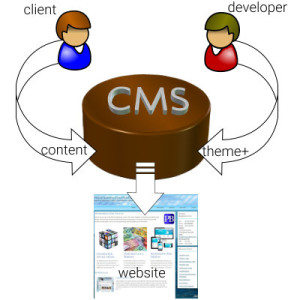 In the beginning days of websites they were essentially simply pages of text with no formatting. As the web developed graphics, colour and design all became important criteria. When websites were simply lines of html coding this was tedious and meant that the web developer had to manage the content as well as the code, and this was clearly something that needed to be addressed. It also meant that any change had to be enacted on every page. Various technology steps came along and then the advent of the Content Management System changed this completely.
In the beginning days of websites they were essentially simply pages of text with no formatting. As the web developed graphics, colour and design all became important criteria. When websites were simply lines of html coding this was tedious and meant that the web developer had to manage the content as well as the code, and this was clearly something that needed to be addressed. It also meant that any change had to be enacted on every page. Various technology steps came along and then the advent of the Content Management System changed this completely.
The whole idea of a content management system is to design the vehicle to carry the content to the person who visits your website. This is done by separating the design and content components in such a way as the site develops a consistent look and feel from start to finish. In the days of newspapers and journals each leading publication had a style manual. This defined the text, the fonts, the layout criteria so that writers and journalists knew what was going to happen to what they wrote.
These days the function is largely carried out by the theme or skin that runs the website. The content is stored in a database and when the visitor goes to a page, the database runs the queries required to determine what should be displayed and the theme then arranges the data on the page. This means that the client can edit the content knowing that the theme will look after all the presentation details so that it looks consistent and belongs to the rest of the site. The are many different types of CMS. WordPress and DNN are just two different types that I work with.
There are a number of advantages to this approach, not the least of which is that the whole website gets a consistent look and feel from start to finish. This means that people are able to easily find their way, not being distracted by a sudden change in font of layout from the last page. It also means, importantly, that the client can manage the content, enter some text, upload a picture and the design theme looks after the presentation. This clearly reduces the cost of getting information onto the website and it reduces the time it takes in getting something updated on a website. From the web designer’s point of view it allows them to focus on design without needing to be buried in content.
